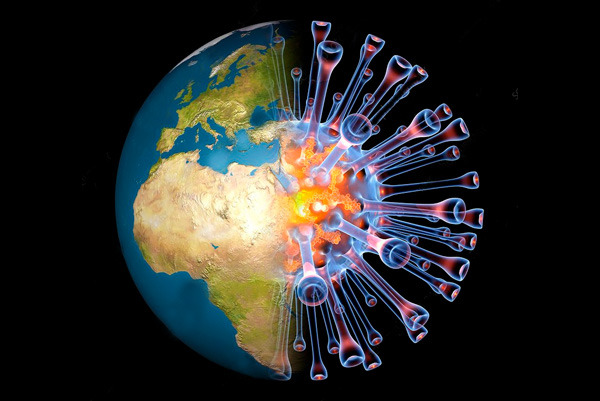Physicists and students from the Physics Department use data modelling to fight the spread of Covid-19

A team led by Prof. Frank Krauss and including Prof. Richard Bower and 8 of our Ph.D. students from the Centre for Doctoral Training in Data-Intensive Science (CDT) have created a simulation in the form of an agent-based model, which describes the spread of an epidemic such as COVID-19 through a virtual population.
Within this model, called JUNE, the team constructed a detailed digital twin of the UK population, with supreme social and geographical granularity. It represents about 55 million residents in England and Wales, based on publicly available census data from the Office for National Statistics. At a resolution in units of about 250 residents JUNE reproduces the ONS data describing their age, sex, and ethnicity and the composition of the households they inhabit. At a somewhat lower resolution of about 10,000 people the model also assigns work places and schools. Using time surveys and geo-spatial data JUNE traces the daily movements and activities of all 55 million individuals in the virtual population.
Simulating the daily movement of people gives rise to the social interactions and contacts that propagate the infections through the virtual population, modelled in a probabilistic fashion. The progress of the disease in infected individuals and their trajectory through the healthcare system -- for example admission to the hospital or intensive care -- is modeled based again on public health data.
JUNE includes all relevant non-medical mitigation strategies such as social distancing, mask wearing, partial and complete lock-downs, the times they have been invoked, and the compliance of the population with these measures. Simulating different strains of the virus with different infectiousness, JUNE also includes medical interventions -- vaccination -- and their efficacy in suppressing symptoms or reducing infections in the different mutations.
With all these details in place, the model resolves the spatio-temporal development of the disease spread through the population, reproducing a large set of publicly available data. It also finds non-trivial correlations of infection and fatality rares with a variety of societal factors. JUNE has been proven in the midst of the current crisis and is currently being used by NHS-England’s COVID-19 response team to inform their strategic and operational planning. Three of the PhD students -- Joe Aylett-Bullock, Carolina Cuesta-Lazaro, and Arnau Quera-Bofarull -- also adapted the model for other environments. Collaborating with a team from United Nations Global Pulse (UNGP), the United Nations refugee agency (UNHCR) and the World Health Organisation (WHO) they provided an essential tool to formulate a response to COVID in refugee camps, for example in Bangladesh.
For further reading we recommend the original JUNE publication (https://www.medrxiv.org/content/10.1101/2020.12.15.20248246v2) and a recent publication on the work in the refugee camps (https://www.medrxiv.org/content/10.1101/2021.01.27.21250611v1).


/prod01/prodbucket01/media/durham-university/departments-/physics/teaching-labs/VT2A9034-1998X733.jpeg)